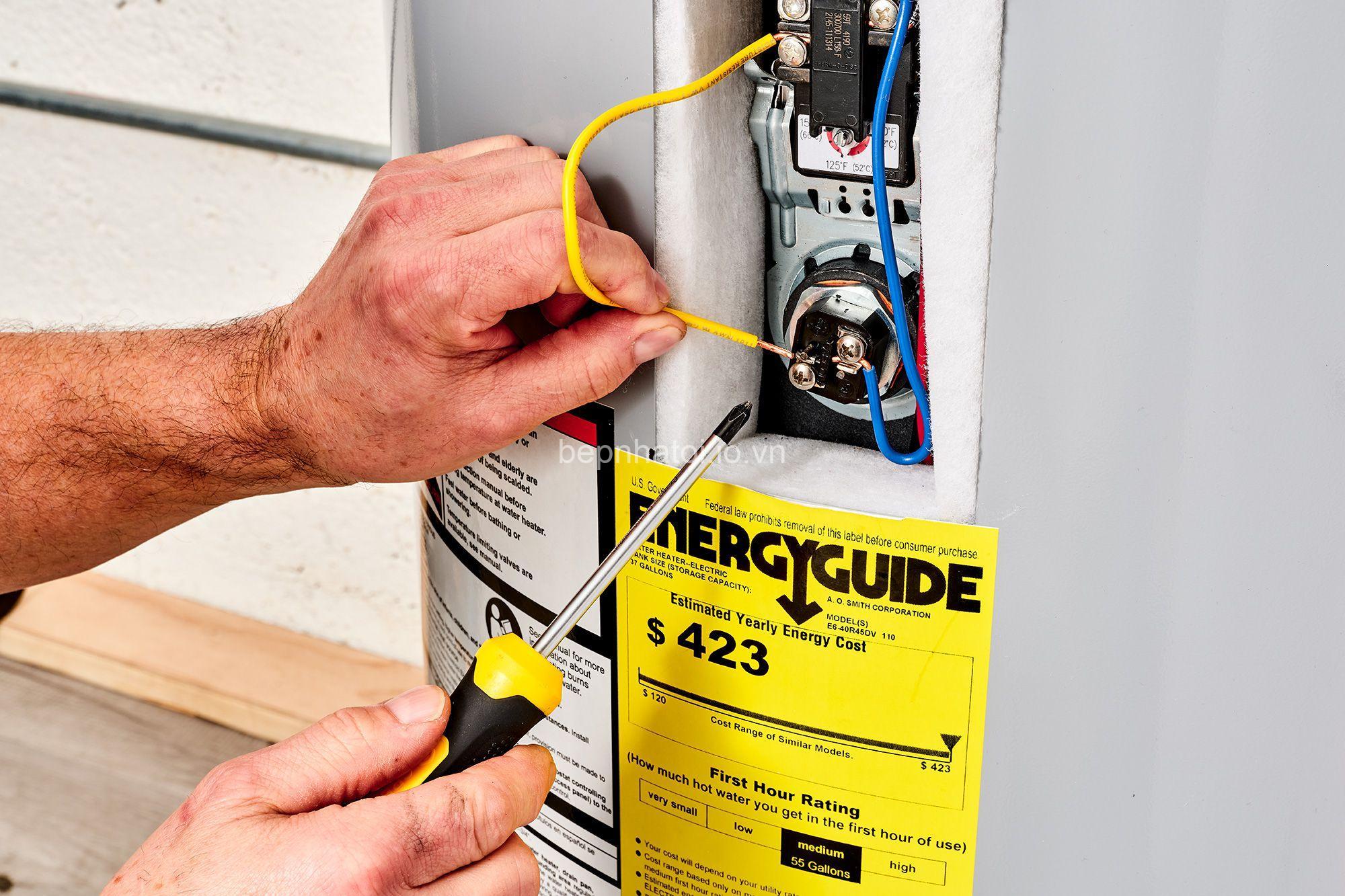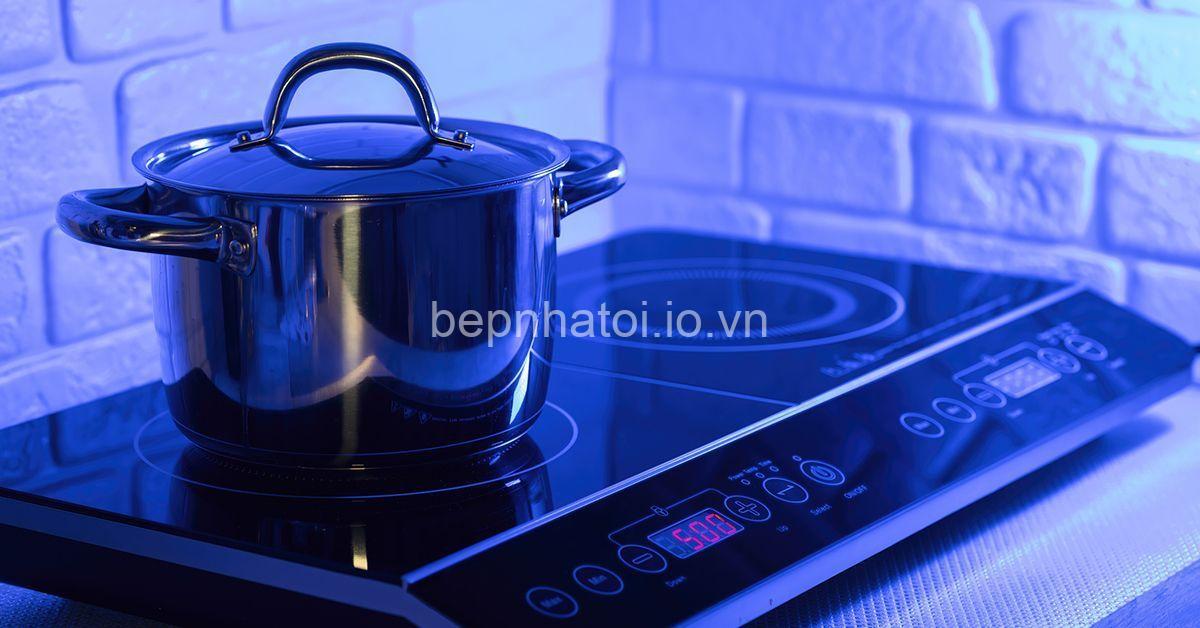
Heating Element Replacement: Signs & When to Replace. In today’s article, bepnhatoi.io.vn will explore with you in the most detailed and complete way. See now!
Recognizing the Signs of a Failing Heating Element
Heating elements are essential components in various appliances, including ovens, water heaters, and electric heaters. They generate heat to perform their intended function. Over time, these elements can wear down or become damaged, leading to reduced performance and potential safety hazards.
Reduced Heating Efficiency:
One of the first signs of a failing heating element is reduced heating efficiency. Noticeable changes in heating performance might include longer heating times, uneven heat distribution, or the appliance’s inability to reach the desired temperature. For example, if your oven takes significantly longer to preheat or the water heater doesn’t heat water quickly enough, these could be indicators of a faulty heating element. Uneven heat distribution is another common sign, where certain areas of the appliance are hotter than others. This can lead to inconsistent cooking results in an oven or localized hot spots in a water heater.
Unusual Noises:
Another telltale sign of a failing heating element is unusual noises coming from the appliance. You might hear clicking, popping, buzzing, or humming sounds, especially when the appliance is turned on. These noises can indicate a loose connection, a broken element, or a buildup of debris around the element.
Visible Damage:
Inspecting the heating element for visible damage can provide a clear indication of its condition. Cracks, burns, corrosion, or discoloration on the element can signal a significant issue. If you notice any of these signs, it’s advisable to replace the heating element as soon as possible to prevent further damage or potential safety risks.
Electrical Problems:
Failing heating elements can also cause electrical problems, such as flickering lights, tripping circuit breakers, or a strange smell coming from the appliance. These issues could indicate a dangerous malfunction, and it’s crucial to address them immediately.

Determining When Replacement is Necessary
Once you’ve observed any of the signs of a failing heating element, it’s important to determine whether a replacement is necessary. Consider the severity of the symptoms and their impact on appliance performance. Minor issues might be addressed with temporary solutions, but more serious problems require immediate attention.
Safety Considerations:
Safety is paramount when dealing with heating elements. Faulty elements can pose significant hazards, including electrical shocks, fire risks, and carbon monoxide poisoning. It’s always advisable to err on the side of caution and seek professional assistance if you suspect a dangerous malfunction.
Cost-Benefit Analysis:
Before deciding on a repair or replacement, weigh the costs involved. Repairing a faulty heating element might be a cost-effective solution, but replacing it might be more economical in the long run, especially for older appliances.
Appliance Age and Overall Condition:
The age and overall condition of the appliance are essential factors to consider. Replacing a heating element in an old appliance might not be financially feasible, as other components might also require replacement soon.
Taking Action: Repair or Replace
Once you’ve assessed the situation, it’s time to decide on the appropriate course of action. Seeking professional assistance for diagnosis and repair is always recommended, especially if you’re not comfortable working with electrical appliances. However, if you’re inclined to attempt a DIY replacement, ensure you have the necessary skills and experience in handling electrical components.
Professional Assistance:
Professional appliance repair technicians possess the expertise and tools to accurately diagnose heating element issues and perform safe replacements. They can also provide valuable advice on maintaining your appliance’s overall functionality.
DIY Replacement (if applicable):
If you’re comfortable with DIY repairs, carefully follow the manufacturer’s instructions or consult reliable repair manuals specific to your appliance model. Ensure you have the correct replacement element with the same wattage, voltage, and size as the original. Always disconnect power to the appliance before attempting any repairs.
Finding the Right Replacement Element:
When choosing a replacement element, ensure it’s compatible with your appliance. Pay attention to wattage, voltage, and size specifications to guarantee a seamless fit and optimal performance.
Safety Precautions
Safety is paramount when working with electrical components. Always take the necessary precautions to prevent accidents or injuries.
Disconnect Power:
Before attempting any repairs or replacements, always disconnect power to the appliance. This simple step can save lives and prevent potential electrical shocks.
Use Appropriate Safety Equipment:
Protect yourself with proper safety equipment, such as insulated gloves, safety glasses, and non-conductive tools.
Seek Professional Help for Complex Repairs:
If you’re unsure about a repair or the work seems too complex, don’t hesitate to call a qualified technician. They possess the expertise to handle electrical work safely and efficiently.
Additional Tips for Appliance Maintenance
Regular maintenance can help prevent heating element issues and extend the life of your appliances.
Regular Cleaning:
Keep your appliances clean by regularly removing dust and debris that can accumulate around heating elements. Clean your oven regularly and ensure proper ventilation for your water heater and other appliances.
Proper Ventilation:
Adequate ventilation is crucial for appliances with heating elements. Ensure there’s sufficient airflow around the appliance to prevent overheating and ensure optimal functionality.
Follow Manufacturer’s Recommendations:
Always refer to the manufacturer’s guidelines for appliance usage, maintenance, and cleaning. Following their recommendations can help prevent premature failure and prolong the life of your appliances.
Conclusion
Recognizing signs of a failing heating element is essential for maintaining your appliances and ensuring safety.
Susan Grace Rodriguez, an animal lover and owner of bepnhatoi.io.vn, is dedicated to providing valuable information about pets and their care. For more helpful tips and advice on animal care, visit bepnhatoi.io.vn.
Share your experiences or ask questions by leaving a comment below!
Important FAQs
What are the signs of a failing heating element?
– Reduced heating efficiency (e.g., longer heating times, uneven heat distribution).
– Unusual noises (e.g., clicking, popping, buzzing).
– Visible damage (e.g., cracks, burns, corrosion).
– Electrical problems (e.g., flickering lights, tripping circuit breakers).
When is it necessary to replace a heating element?
– When the appliance is not heating properly despite being turned on.
– When there are unusual noises or visible damage.
– When there are electrical problems related to the appliance.
Is it safe to replace a heating element myself?
– Replacing a heating element can be dangerous if you don’t have the necessary skills and experience. It’s advisable to contact a professional technician, especially if you’re not familiar with electrical work.
How much does it cost to replace a heating element?
– The cost of replacing a heating element varies depending on the appliance, the brand, and the complexity of the repair. It’s advisable to contact a professional technician for an accurate estimate.
How long do heating elements last?
– The lifespan of a heating element varies depending on the quality of the element, usage frequency, and appliance maintenance. Generally, heating elements can last for several years, but it’s always a good idea to keep an eye out for signs of failure.
EAVs
| Entity | Attribute | Value |
|---|---|---|
| Heating Element | Type | Ceramic, Metal, Nichrome |
| Heating Element | Wattage | 1000W, 1500W, 2000W |
| Heating Element | Voltage | 110V, 220V |
| Heating Element | Size | Small, Medium, Large |
| Heating Element | Life Expectancy | 5 years, 10 years |
| Appliance | Type | Oven, Water Heater, Electric Heater |
| Appliance | Brand | GE, Whirlpool, Samsung |
| Appliance | Age | 5 years, 10 years, 15 years |
| Appliance | Warranty | 1 year, 2 years, 3 years |
| Appliance | Energy Consumption | High, Medium, Low |
| Repair | Cost | $50, $100, $200 |
| Repair | Time | 1 hour, 2 hours, 3 hours |
| Repair | Professional | Yes, No |
| Safety | Risk | Electrical Shock, Fire |
| Safety | Precautions | Disconnect Power, Use Gloves |
| Troubleshooting | Symptom | Reduced Heating, Unusual Noises |
| Troubleshooting | Cause | Faulty Element, Wiring Issue |
| Troubleshooting | Solution | Replace Element, Call Technician |
| Warranty | Coverage | Parts, Labor |
| Warranty | Expiration | 1 year, 2 years, 3 years |
ERE
| Entity 1 | Relation | Entity 2 |
|---|---|---|
| Heating Element | Is a part of | Appliance |
| Appliance | Is used for | Heating |
| Appliance | Has a | Warranty |
| Heating Element | Can cause | Electrical Shock |
| Heating Element | Can cause | Fire |
| Repair | Requires | Tools |
| Repair | Requires | Expertise |
| Troubleshooting | Helps | Identify Problem |
| Troubleshooting | Provides | Solution |
| Safety | Involves | Precautions |
| Warranty | Covers | Parts |
| Warranty | Covers | Labor |
| Warranty | Has a | Expiration Date |
| Heating Element | Has a | Life Expectancy |
| Heating Element | Has a | Wattage |
| Heating Element | Has a | Voltage |
| Appliance | Has a | Brand |
| Appliance | Has a | Age |
| Appliance | Has an | Energy Consumption |
| Appliance | Has a | Model Number |
Semantic Triples
| Subject | Predicate | Object |
|---|---|---|
| Heating Element | is a part of | Appliance |
| Appliance | is used for | Heating |
| Appliance | has a | Warranty |
| Heating Element | can cause | Electrical Shock |
| Heating Element | can cause | Fire |
| Repair | requires | Tools |
| Repair | requires | Expertise |
| Troubleshooting | helps | Identify Problem |
| Troubleshooting | provides | Solution |
| Safety | involves | Precautions |
| Warranty | covers | Parts |
| Warranty | covers | Labor |
| Warranty | has a | Expiration Date |
| Heating Element | has a | Life Expectancy |
| Heating Element | has a | Wattage |
| Heating Element | has a | Voltage |
| Appliance | has a | Brand |
| Appliance | has a | Age |
| Appliance | has an | Energy Consumption |
| Appliance | has a | Model Number |





